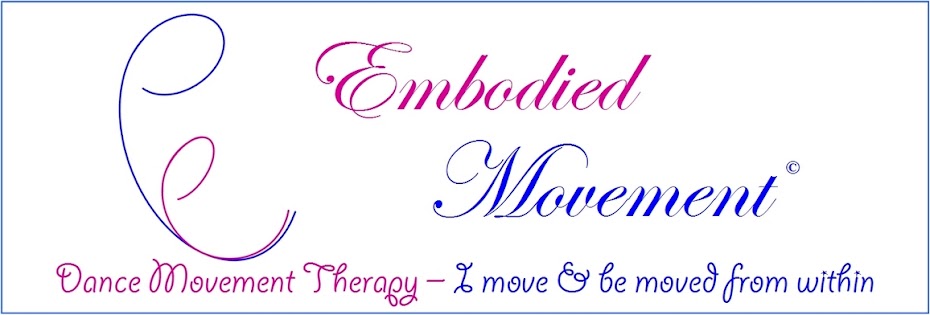'As a
practitioner and educator,
I continue to address my body knowledge/body
prejudice through supervision.'
~ Jessica L. Young
Rhythm? Why study rhythm? Is this just an ordinary rhythm?
Moving the Rhythm is a programme Embodied Movement has created based on the Kestenberg Movement Profile (KMP) on the Tension-Flow Rhythm. After studying, training, exploring and embodying Tension-Flow Rhythm since 2005, I have discovered the richness in the materials other than using it in clinical work and also in my personal life. KMP is a tool where human movements are being observed and in the process aid in understanding the drives and biological needs of each individual through the tension-flow rhythms, for instance.
In 2005, before becoming a dance therapist, I attended the five days intensive Dance Movement Therapy (DMT) introduction in Antioch University New England. Susan Loman introduced KMP in one of the 4-days programme. Immediately I was drawn and attracted to the tension-flow rhythm materials. It is part of the materials which opens and sparkles a journey of my own process, other than DMT training, supervision, Laban Movement Analysis, Authentic Movement, the four modules in Body-Mind Centering (BMC) leading to Infant Development Movement Education (IDME) and Ways of Seeing Training.
After exploring the training in Tension-Flow Rhythm for three rounds, each time, it revealed information in embodying the materials. My on-going process of addressing ‘my body knowledge and body prejudice’ (Young, 2012) has enabled me to understand my culture, my preferences and my discomfort through KMP tension-flow rhythms and attributes.
In the clinical work, with the knowledge of KMP, it has provided me insights into the world of the children and adults. Even it is out of the therapy setting context, facilitating programmes, workshops and in teaching, KMP has become a valuable tool. Having embodying the materials bodily since 2005, the awareness of the rhythms equip me even in my personal life - in relationship with others and myself.
Examples:
(A) Understanding Toddler at 2
An article is written on ‘Understanding Toddler at 2’ based on the KMP snapping and biting rhythm
(B) Personal discovery and application in life
I am aware my nature has the tendency to be in a start/stop rhythm. It is a useful rhythm when a task has to be completed. It enables me to complete my task and meet the deadline. However, if I am always in a start/stop rhythm throughout my day and my life, soon I may suffer from burn-out. I learnt about the running and drifting rhythm, another rhythm of tension-flow. I have come to acknowledge that it hardly existed in my movement repertoire. When I understand the quality of this rhythm, it becomes useful and I learn to embody this quality when I am on a holiday and when my body needs a break. Because I have moved, explored, embodied the rhythm in my body, I am able to apply it in my personal life.
(C) What about clinical work?
I carry the KMP lens in working with my clients. This is one of the lens I use other than the other trainings I have studied (I integrate all the materials in my work). With the knowledge of the KMP material, it gives me avenues to understand the inner state of a child or an adult. With the insight, I am able to relate and enter into the world of the client and work from there with intervention.
Having used the materials and finding it useful, I was inspired to create the Moving the Rhythm workshop based on KMP Tension-Flow Rhythms since 2010. It is available to parents, educators, professionals and general public in the workshops to explore the 10 Tension-Flow Rhythms; in understanding the movement patterns across the lifespan. The purpose of this workshop is to gain an insight into the KMP rhythms and movement cues in babies, children and adults. The materials will contribute in establishing a deeper connecting relationship between parent and child, relating and understanding with one another in another level, dimension and dynamic through tension-flow rhythms. In the teaching and therapy settings, the educators and professional will be informed by KMP – a tool to understand what a movement may possibly be saying.
Check our website Embodied Movement for our workshops.
Welcome to read the feedback from our participants.
Note:
Notation is NOT taught in this workshop for clinical assessment. For clinical assessment, movement analysis and research work, to be certified for it, the training comprises of 3 parts of 4 days each by Susan Loman.
Reference:
Young, J.L. (2012) Bringing My Body into My Body of knowledge as a Dance/Movement Therapy Educator, AmericanJournal of Dance Therapy. 34 (2), 141-158.




